The most memorable locations in Fallout
Oh, the places you'll go
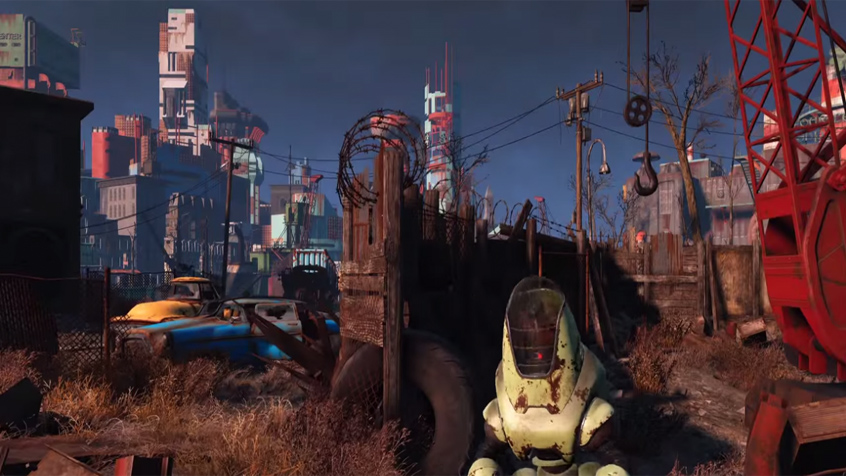
One of the most powerful moments of Fallout 3 happens very near the beginning, when you first emerge from the vault into the dusty, irradiated air of post-apocalyptic DC. All around you, stretching out in every direction, a seemingly infinite wasteland beckons, brimming to overflowing with adventure and possibility and the promise of discovery. But none of that would pay off if the bleached wasteland that confronted you wasn't populated with incredible locations, fantastic corners of this grim future filled with characters, grudges, and dark secrets that in many cases proved unforgettable. These locations are the hallmarks of Fallout, and they've been pulling people deep into the richly drawn settings of this series since 1997. What follows are some of the best from every main entry in the franchise, and a little about why we loved them.
You might notice that none of the vaults are mentioned here, and there's a reason for that. Fallout's vaults could easily warrant a full feature of their own, so I've omitted them here. You also won't find any DLC specific locations, because I want this list to reflect a universal experience that all players of these games could've had.
Junktown (Fallout)
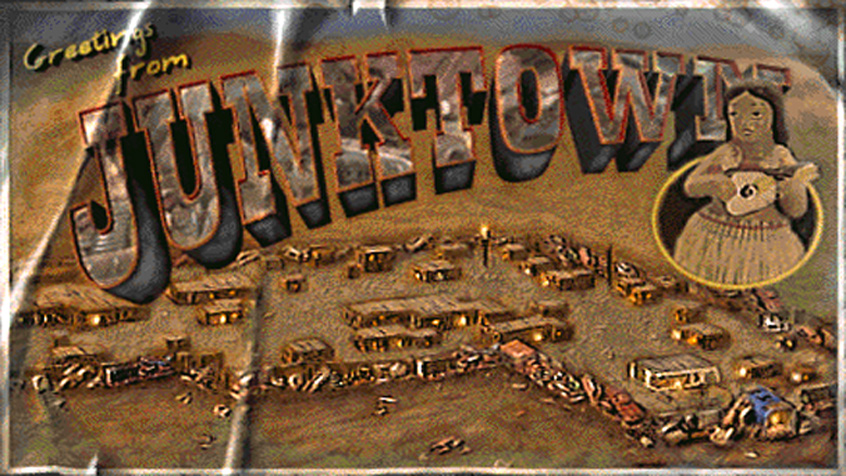
Junktown stands out as the one of the earliest moments in Fallout that evokes what life in this post-nuclear world is really like. True to its name, Junktown is literally a settlement cobbled together from the debris of this shattered world. Surrounded by a hastily-constructed wall of rusted vehicles, corroded steel barrels, and sheets of crumpled tin, Junktown is a testament to human resourcefulness and the ability to survive and adapt under the worst conditions.
It's not all roses in Junktown though, and that's what's so memorable about it. Despite all the shared hardships these people have endured, human nature still reveals its dark side in Junktown, from the banal cruelty of its resident gang to assassination plots and local intrigue. Junktown is a great encapsulation of life after the apocalypse, a symbol of both human perseverance and tragic pettiness.
The Cathedral (Fallout)
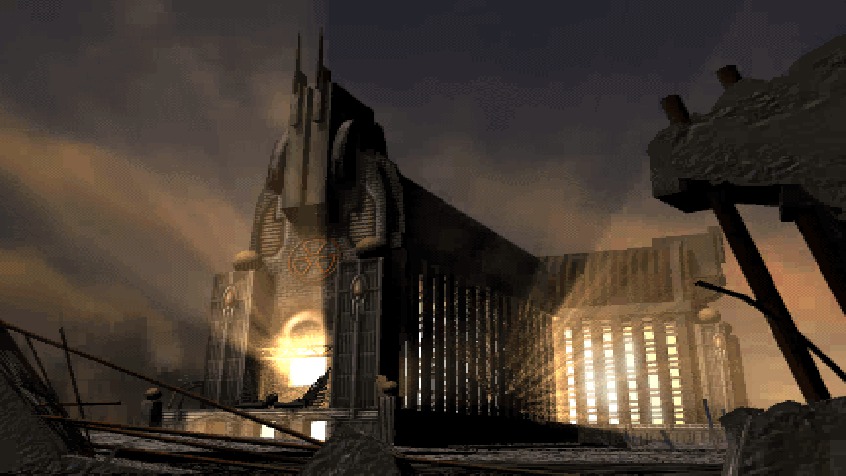
The Cathedral is fantastic example of storytelling in the Fallout mold, and like Junktown is a dichotomy that reflects the best and worst about human nature. On the surface, it houses the Children, a cult that represents hope for a brighter future, one where peace reigns and mankind is unified in the quest for progress.
In reality, however, the Cathedral and its deluded cult is a cover for the Master, a twisted being born of a scientist's encounter with a botched military experiment called the Forced Evolutionary Virus. Now a hybrid mass of flesh and technology, haunted by the personalities of the other people he's forcibly "absorbed", the Master's doomsday plot is to unify the wasteland by infecting humanity with the FEV, transforming them all into monstrous super mutants. The dual-nature of the Cathedral and the climactic encounter between the player and the Master made it one of the most striking storytelling devices of its era.
Enclave Oil Rig (Fallout 2)

This bunker/research facility/advanced weapons platform disguised as an oil drilling platform has the distinction of being one of the most distinctive destinations in the first two Fallout games. It's emblematic of everything that went wrong in the pre-apocalypse that led the world into oblivion - a monument to man's hubris, created to drill for precious natural resources, powered by volatile nuclear energy (and eventually destroyed in a huge thermonuclear blast).
Weekly digests, tales from the communities you love, and more
Home to the Enclave, the remnants of the elite that once guided the United States' destiny, the oil rig has become a snake pit of self-indulgent propagandists terrified of the outside world. Seeing the entire thing consumed by a massive explosion is an amazing moment, because while it's satisfying to wipe out this coven of ignorance and bigotry, it's painful to watch a complex full of such rare and useful technology be destroyed.
New Reno (Fallout 2)

New Reno is a perfect example of everything old being new again. While in the real world the inevitable march of progress has sanitized places like Vegas and Reno and transformed them into glossy, toothless tourist traps, in the post-apocalypse America's sin cities have reverted to their gritty roots.
The predecessor of New Vegas, New Reno is a haven for old school mobsters clinging to power through brutal thuggery. While Hollywood has romanticized old Vegas, New Reno does a great job of exposing just how dark and savage organized crime can be. Beyond operating casinos and running guns, the bosses in New Reno are also responsible for pumping drugs into the wasteland and playing host to a major human trafficking operation. Like so many of Fallout's best locations, New Reno's surface of glitz and glamour conceals a putrid underbelly where families are destroyed, and lives are gambled away.
Rivet City (Fallout 3)
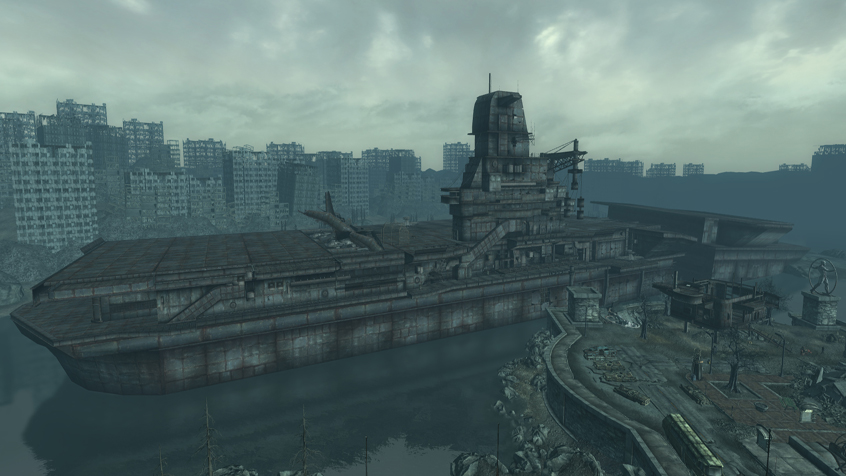
Rivet City is a great spokesman for how incredible Fallout in first person can look. Vast and imposing, in a lot of ways it's Fallout 3's Junktown: a dramatic example of humanity scavenging the old world for shelter and security in the new one. And, to be honest, the idea of a post-apocalyptic city tucked inside the monstrous shell of an aircraft carrier is really spectacular.
The best thing about Rivet City is how much it feels like a real city. After wandering the barren wasteland discovering tiny settlements or ruined buildings, Rivet City feels massive and full of life. It's also an interesting gateway into pre-war life, with its strange aircraft and distinctive industrial design. It represents one of those disorienting moments where you realize that while the world that was destroyed was familiar in a lot of ways, it wasn't exactly our world.
Tenpenny Tower (Fallout 3)
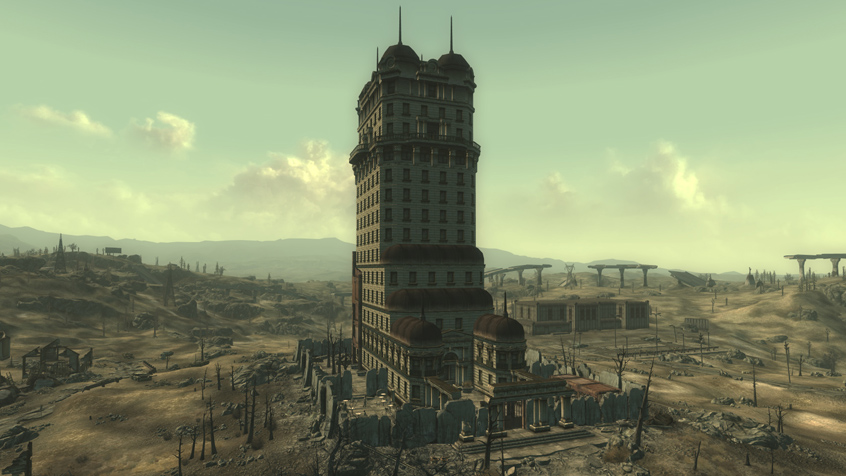
Allistair Tenpenny's exclusive tower is a nexus of themes and story threads that tie together so much of the fabric of Fallout 3. At first you see it first from a great distance, and it represents a distant beacon you aspire to reach, a massive, modern looking curiousity that towers above the flat wreckage of the wasteland. But it's aspirational in other ways, a safe harbor stocked with luxuries and conveniences unheard of in other desperate corners of the world, guarded by a well armed security force. Naturally, all sorts want in to Tenpenny Tower, but those inside aren't so keen on company.
The xenophobic attitude of Tenpenny Tower (reminiscent of the Enclave aboard their oil rig fotress) is epitomized by its founder, a man around whom two critical story arcs take shape. The result of the player's decisions regarding Mr. Tenpenny can lead to catastrophic consequences, like a nuclear explosion destroying a peaceful community of survivors or Tenpenny Tower itself being overrun by embittered, homicidal ghouls. In both of these cases we see Fallout at its best, empowering the player to shape events that alter the fabric of the wasteland.
Oasis (Fallout 3)
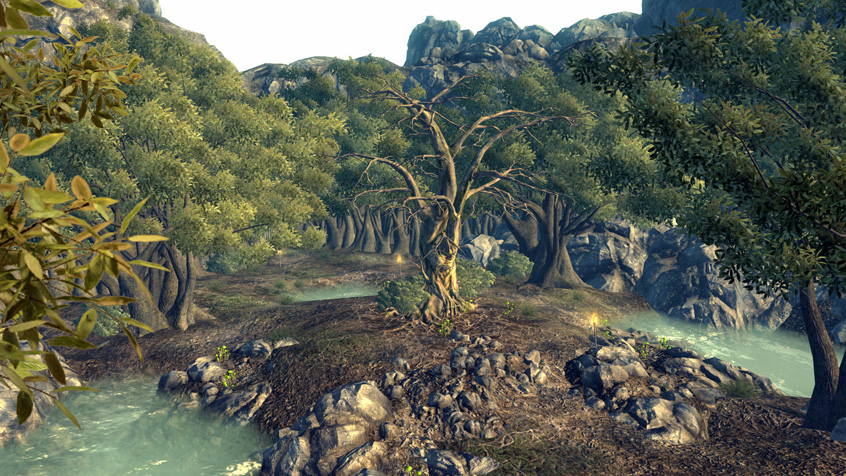
Fallout has always been expert when it comes to bizarre events resulting in a dramatic subversion of expectations, and Oasis is probably the best example of that in the series. After being long accustomed to the browns and greys that make up the majority of the wasteland palette, to stumble on a pocket of verdant green and abundant life is breathtaking.
Stepping into the grove for the first time is like stepping out of reality, and so it's perhaps not surprising to encounter a creature like Harold/Bob in this psychedelic bubble. This mutant combination of a man and tree, Harold and Bob are the result of a high dose of FEV, but instead of the deranged megalomania of Master, the combination has had a remarkable healing effect on the surrounding waste. Discovering their pastoral paradise and the peace loving Treeminders is a breath of fresh air, and such a relief after the scorched hellscape that surrounds it.
HELIOS One (Fallout: New Vegas)
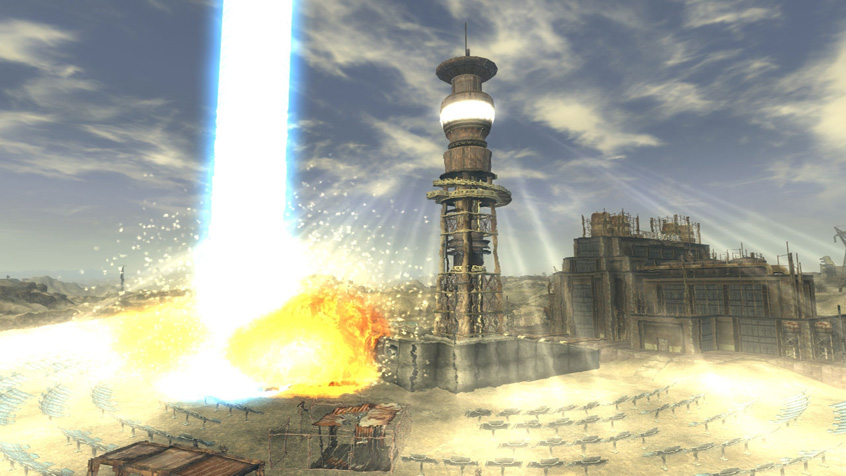
It's easy to forget as you wander the wasteland, surrounded by primitive tech cobbled together from the ruins of civilization, that the pre-war world was a place of technological marvels. HELIOS One is a bright reminder of mankind's achievements, while at the time a harbinger of its violent self-destruction.
At first HELIOS One seems like a simple and elegant proposition, an energy station that soaks up solar power and distributes precious electricity around the Mojave. Look deeper, however, and you discover what lies in its secret heart, the controls for a solar powered weapon mounted on an orbiting satellite. When activated, the Archimedes II grants the player the power of a god. Point a handheld weapon at anything in the environment and a massive column of solar flame descends upon it, annihilating anything nearby. HELIOS One is not just a place, but a weapon and another important juncture where player choice is vital in determining the future of the wasteland.
Jacobstown (Fallout: New Vegas)

It's no surprise that some of the most memorable places in Fallout are the ones that seem completely out of place in a ravaged post-apocalypse. Tucked away in a quiet nook of the mountains, Jacobstown looks much as it did before the Great War that decimated the earth, a pretty alpine resort replete with rustic amenities. The only nod to the reality of the post-war wasteland is the makeshift wooden stockade fence that surrounds it.
It's only when you make your way into Jacobstown that the truth is revealed. What was once a retreat for the wealthy elite is now home to a group of sympathetic super mutants broken by mental illness. Their caretaker, Marcus, a super mutant himself and the legacy of the Master's dark vision, has appeared previously in the series as a brute and a lawman. Transformed when he witnesses the plight of his less fortunate brethren, Marcus adopts his new role to salve the suffering of super mutants imprisoned within their own shattered minds. The way Jacobstown humanizes super mutants, showing them as victims battered by fate, showing us a community driven by compassion rather than cold self-interest, is an surprisingly touching note in a series that's so often about violence and deceit.
The Vegas Strip (Fallout: New Vegas)
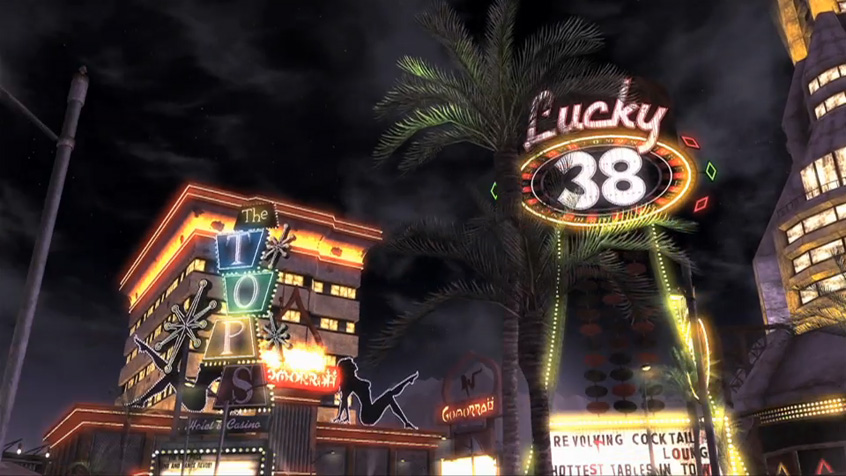
The New Vegas strip is New Reno's sequel, all grown up and popped out in glorious, neon-lit 3D. For Fallout veterans the homage to a beloved set piece is a nice nod, but the Vegas strip is endowed with plenty of unique character of its own. It's the heart and soul of Fallout: New Vegas, and it rises to the challenge of buoying an entire game with panache.
The glowing spires of the strip's ritzy casinos are visible from the earliest moments of the game, luring players towards their warm glow with the promise of action and riches. And while both of those things are available in spades (pun intended), the strip also hides a complex web of machinations that dazzles the mind the way the sparkling facades of the casinos dazzle the eyes. Tribalism, back door dealing, and bloody betrayal are the hallmarks of New Vegas, a boiling pot of deadly intrigue. Oh, and cannibalism. Did we mention the cannibalism?
Alan Bradley was once a Hardware Writer for GamesRadar and PC Gamer, specialising in PC hardware. But, Alan is now a freelance journalist. He has bylines at Rolling Stone, Gamasutra, Variety, and more.



